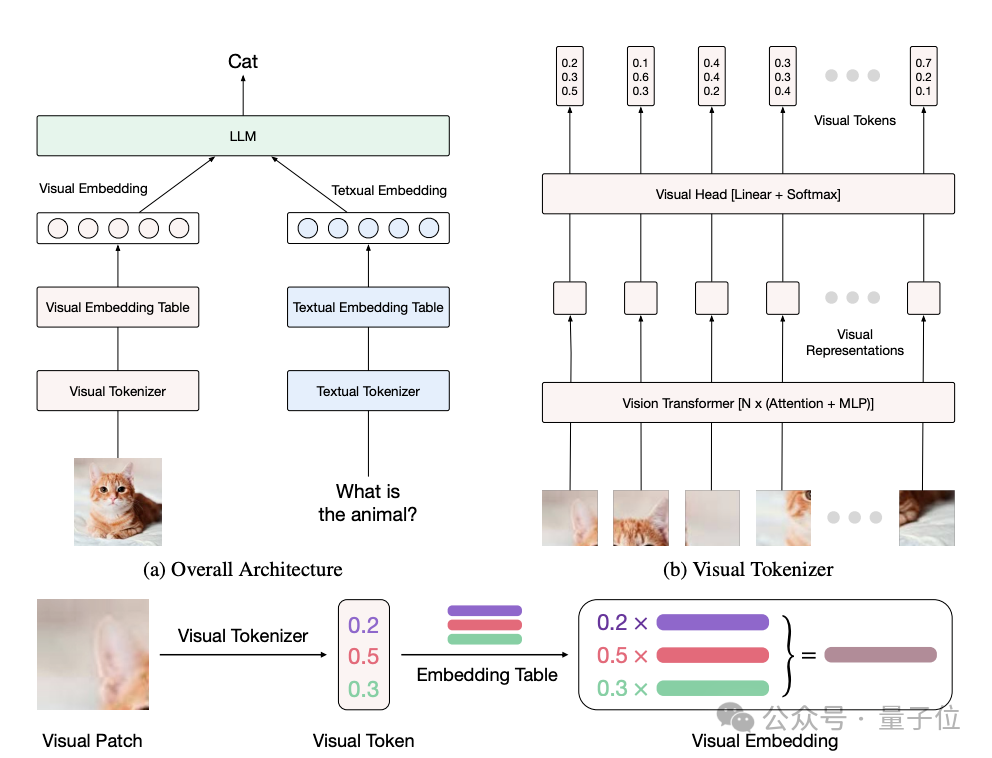Ovis1.6-9B视觉大模型环境搭建&推理
引子
前阵子,阿里Qwen2-VL刚刚闪亮登场,感兴趣的小伙伴可以移步https://blog.csdn.net/zzq1989_/article/details/142332651?spm=1001.2014.3001.5501。这第一的宝座还没坐多久,自家兄弟Ovis1.6版本就来了,20240919阿里国际AI团队开源多模态大模型Ovis1.6。在多模态权威综合评测基准OpenCompass上,Ovis1.6-Gemma2-9B版本综合得分超越Qwen2VL-7B、InternVL2-26B和MiniCPM-V-2.6等主流开源模型,在300亿以下参数开源模型中位居第一。

一、模型介绍
根据OpenCompass评测基准,Ovis1.6-Gemma2-9B超过了Qwen2-VL-7B、MiniCPM-V-2.6等一众相同参数量级的知名多模态模型。在数学等推理任务中,甚至有媲美70B参数模型的表现。Ovis1.6的幻觉现象和错误率也低于同级别模型,展现了更高的文本质量和准确率。阿里国际AI团队的核心思路是:从结构上对齐视觉和文本嵌入。当前,多数开源多模态大语言模型(MLLM)并非从头训练整个模型,而是通过像多层感知机(MLP)这样的连接器,将预训练的大语言模型(LLM)和视觉Transformer集成起来,给LLM装上“眼睛”。这样一来,就导致了一个问题:MLLM的文本和视觉模块采用不同的嵌入策略,使得视觉和文本信息没办法无缝融合,限制了模型性能的进一步提升。针对这个问题,Ovis采用了视觉tokenizer+视觉嵌入表+大语言模型的架构。

二、环境搭建
1、模型下载
2、环境安装
docker run -it --rm --gpus=all -v /datas/work/zzq:/workspace pytorch/pytorch:2.2.2-cuda12.1-cudnn8-devel bash
git clone https://github.com/AIDC-AI/Ovis.git
cd /workspace/Ovis/Ovis-main
pip install -r requirements.txt -i https://pypi.tuna.tsinghua.edu.cn/simple
pip install -e .
三、推理测试
1、修改代码

from dataclasses import field, dataclass from typing import Optional, Union, List import torch from PIL import Image from ovis.model.modeling_ovis import Ovis from ovis.util.constants import IMAGE_TOKEN @dataclass class RunnerArguments: model_path: str max_new_tokens: int = field(default=512) do_sample: bool = field(default=False) top_p: Optional[float] = field(default=None) top_k: Optional[int] = field(default=None) temperature: Optional[float] = field(default=None) max_partition: int = field(default=9) class OvisRunner: def __init__(self, args: RunnerArguments): self.model_path = args.model_path # self.dtype = torch.bfloat16 self.device = torch.cuda.current_device() # self.dtype = torch.bfloat16 self.dtype = torch.float16 self.model = Ovis.from_pretrained(self.model_path, torch_dtype=self.dtype, multimodal_max_length=8192) self.model = self.model.eval().to(device=self.device) self.eos_token_id = self.model.generation_config.eos_token_id self.text_tokenizer = self.model.get_text_tokenizer() self.pad_token_id = self.text_tokenizer.pad_token_id self.visual_tokenizer = self.model.get_visual_tokenizer() self.conversation_formatter = self.model.get_conversation_formatter() self.image_placeholder = IMAGE_TOKEN self.max_partition = args.max_partition self.gen_kwargs = dict( max_new_tokens=args.max_new_tokens, do_sample=args.do_sample, top_p=args.top_p, top_k=args.top_k, temperature=args.temperature, repetition_penalty=None, eos_token_id=self.eos_token_id, pad_token_id=self.pad_token_id, use_cache=True ) def preprocess(self, inputs: List[Union[Image.Image, str]]): # for single image and single text inputs, ensure image ahead if len(inputs) == 2 and isinstance(inputs[0], str) and isinstance(inputs[1], Image.Image): inputs = reversed(inputs) # build query query = '' images = [] for data in inputs: if isinstance(data, Image.Image): query += self.image_placeholder + '\n' images.append(data) elif isinstance(data, str): query += data.replace(self.image_placeholder, '') elif data is not None: raise RuntimeError(f'Invalid input type, expected `PIL.Image.Image` or `str`, but got {type(data)}') # format conversation prompt, input_ids, pixel_values = self.model.preprocess_inputs( query, images, max_partition=self.max_partition) attention_mask = torch.ne(input_ids, self.text_tokenizer.pad_token_id) input_ids = input_ids.unsqueeze(0).to(device=self.device) attention_mask = attention_mask.unsqueeze(0).to(device=self.device) if pixel_values is not None: pixel_values = [pixel_values.to(device=self.device, dtype=self.dtype)] else: pixel_values = [None] return prompt, input_ids, attention_mask, pixel_values def run(self, inputs: List[Union[Image.Image, str]]): prompt, input_ids, attention_mask, pixel_values = self.preprocess(inputs) output_ids = self.model.generate( input_ids, pixel_values=pixel_values, attention_mask=attention_mask, **self.gen_kwargs ) output = self.text_tokenizer.decode(output_ids[0], skip_special_tokens=True) input_token_len = input_ids.shape[1] output_token_len = output_ids.shape[1] response = dict( prompt=prompt, output=output, prompt_tokens=input_token_len, total_tokens=input_token_len + output_token_len ) return response if __name__ == '__main__': # runner_args = RunnerArguments(model_path='<model_path>') runner_args = RunnerArguments(model_path='/workspace/Ovis/Ovis-main/models') runner = OvisRunner(runner_args) # image = Image.open('<image_path>') image = Image.open('/workspace/Ovis/Ovis-main/test.png') # text = '<prompt>' text = 'solve the question in this image' response = runner.run([image, text]) print(response['output'])
python ovis/serve/runner.py

好吧,显存不够

